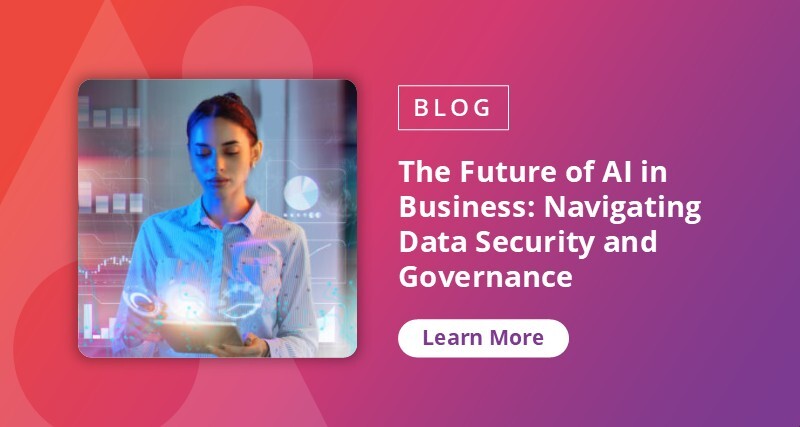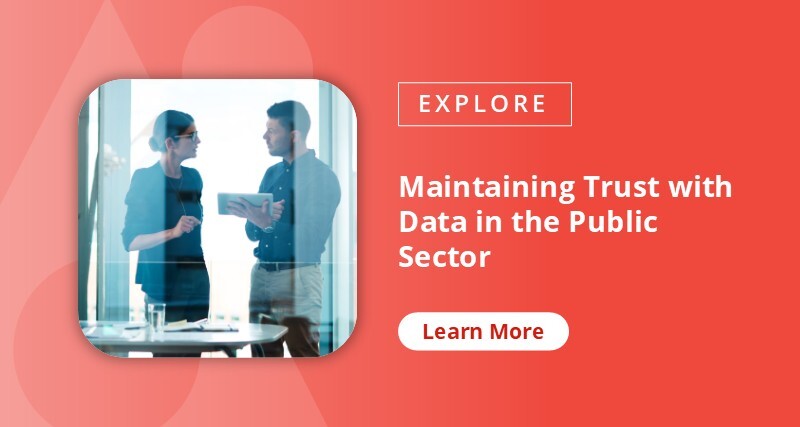Imagine a world where government services are as efficient as your favourite fast-food chain, and as personalised as your streaming service recommendations. Sounds exciting, right?
Let's dive into how AI makes this possible and how AvePoint prioritises key considerations for a successful AI implementation.
Unleashing the Power of AI in Australian Government
Gone are the days when AI was just a fancy term thrown around in tech circles. Today, it's a reality to driving growth and innovation in government service delivery.
The Australian Public Service (APS) is on a mission to not just be AI-ready but to harness AI's full potential to enhance service delivery. Protecting and managing Australia’s data has always been at the forefront of government responsibility, which now requires a strategic approach focusing on proactive data management, security, and governance when talking about using AI.
According to IDC, 92% of surveyed users leverage AI for productivity, with 43% reporting significant returns on investment from AI use cases. Generative AI (GenAI) is a game-changer, helping employees work faster and smarter. Gartner also notes that addressing awareness, adoption, and use of GenAI can lead to significant speed and quality gains.
But it’s not just about AI or GenAI anymore; think now agentic AI. Imagine having a personal assistant who never sleeps, never takes a coffee break, and is always ready to help. That's Microsoft’s Copilot Studio for you! This platform allows you to create and deploy AI agents quickly, reducing the cost and time associated with traditional software development.
But with great power comes great responsibility. The rise of AI also underscores the need for proactive risk assessment, thorough data management, and robust analytics to harness AI's full potential.
The Considerations of Successful AI
To drive AI productivity and adoption, three key pillars have been identified:
- Risk management and mitigation. It’s a must to ensure robust security controls, regular audits, and compliance with established frameworks.
- Data classification and management. Properly structured, accurately labelled, and consistently maintained data ensures AI tools can deliver high-quality outputs.
- Leveraging analytics for AI optimisation. Using advanced analytics to monitor and optimise AI usage, track frequently used AI prompts, and develop targeted training programs greatly contributes to effective AI adoption.

Risk Management and Mitigation
As data volumes surge, organisations must maintain robust security controls to address emerging threats and vulnerabilities. Managing over-exposure and sensitive data is crucial to maintaining the integrity and security of government-held information and protecting the information of the public. Poor data security and/or information management practices can lead to inappropriate access to sensitive information.
However, identifying risks is only part of the equation. Mitigating these risks is critical. Without a clear understanding, there is a tendency to focus on familiar or recent risks, often resulting in reactive rather than proactive measures. By comprehensively understanding your employees, the typical activity in your organisation, and the data you possess, you can effectively safeguard your information.
Drawing from principles established in the Protective Security Policy Framework (PSPF), a shared accountability model is essential for AI governance. PSPF's core tenets of accountability, risk management, and security culture provide a foundation for clarifying stakeholder roles in ensuring AI-generated content remains traceable and transparent. As entities begin to leverage more AI capabilities, these PSPF-aligned accountability mechanisms become critical to mitigate data breach risks while fostering secure AI adoption.
By distributing security responsibilities across the organisation, a shared accountability model can scale data management without sacrificing robust security controls or compliance, driving sustainable benefits while building the trust necessary for broader AI innovation.
Data Classification and Management
For AI tools like Microsoft 365 Copilot to deliver those accurate outputs, data must be properly structured, accurately labelled, and consistently maintained. Think of it as organising your wardrobe — everything in its place, neat and tidy, ready to throw on.
From talking to many customers and other partners, it was discovered that Microsoft 365 Copilot sometimes accessed and shared sensitive information due to improper data governance. While Copilot was just doing its job by finding and collating all accessible information, these instances highlighted the need for robust data classification and lifecycle management.
To ensure AI only accesses the right data, we need to label and manage our information correctly. This means categorising data based on its type and importance and defining how long it should be kept. Effective data classification ensures that only relevant and necessary data is used, reducing the risk of overexposure and minimising storage costs.
By establishing a solid data classification framework, organisations can manage their information assets effectively, supporting AI readiness and ensuring compliance with regulatory requirements. This not only improves the quality of AI outputs but also enhances operational efficiency.

Leveraging Analytics for AI Optimisation
Gartner reported that 61% of organisations have evolved their approach to data and analytics due to the considerable impact of AI technologies. By providing actionable insights into AI performance, analytics helps APS entities understand how Microsoft 365 Copilot is revolutionising their operations.
Picture this: You can track how different teams or individuals use AI in their daily work, revealing which use cases are gaining traction. This allows targeted training programs that enhance user proficiency and confidence. With significant investment in AI technologies, it's crucial to understand the actual value these technologies provide to the workforce. This understanding justifies continued investment and ensures AI tools effectively support and optimise daily operations.
Using analytics to monitor AI interactions and outcomes identifies areas for improvement, ensuring AI investments deliver maximum benefits and support strategic goals. Imagine being able to measure productivity impact, identify successful use cases, and refine AI strategies based on real data. This data-driven approach optimises AI adoption and drives sustainable benefits.
Transforming Public Service Through AI
AI technologies like Microsoft 365 Copilot empower government agencies to focus on work that truly matters. By handling routine tasks, AI allows employees to redirect their talents toward strategic initiatives requiring uniquely human skills such as empathy and ethical judgment. This represents an opportunity for workforce transformation, where APS employees develop new competencies in AI oversight. By embracing AI as a collaborative partner, you can create a more innovative public service, delivering enhanced outcomes for the Australian public through more responsive and efficient government services.


